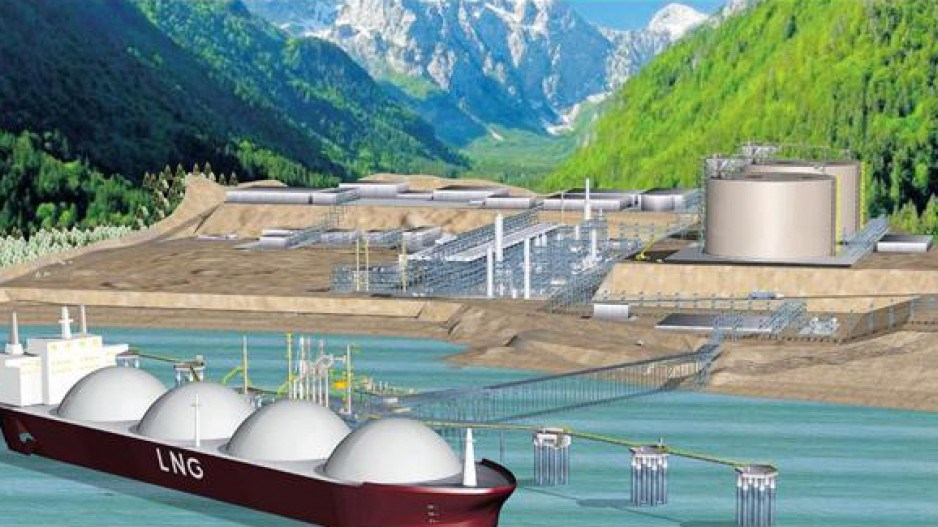B.C. will have the cleanest liquefied natural gas plants in the world, Environment Minister Mary Polak said October 20 – a claim Clean Energy Canada says is technically true, but which ignores greenhouse gas emissions from upstream sources, such as pipelines and gas wells.
The B.C. government on Monday introduced the Greenhouse Gas Reporting and Control Act. It is one of the key pieces of legislation that LNG producers have been waiting for before making final investment decisions of multi-billion dollar LNG plants. The other is the final tax rate for LNG, which is to be announced October 21.
Under the new regulations, the government will establish a benchmark for greenhouse gas emissions from LNG plants.
“Our government promised the cleanest LNG facilities in the world, and that is exactly what we are delivering today,” Polak said.
While it may be technically true that the LNG plants themselves will be the cleanest in the world, the new regulations don’t account for all the GHGs that come from upstream activity from gas wells and pipelines, says Clean Energy Canada.
“It’s a good start—but on its own it won’t result in the cleanest LNG in the world,” said Clean Energy Canada director Merran Smith.
“LNG production releases carbon pollution all the way down the chain of production, from wellhead to waterline. Today’s legislation only addresses the last link in that chain—the port facilities where companies would chill the gas to load it aboard ships. It also allows companies to buy credits rather than actually build cleaner terminals.”
Under the new act, a benchmark of 0.16 tonnes of C02 equivalent per one tonne of LNG produced is established. That is lower than any other jurisdiction, according to the B.C. government.
Developers will have a variety of options for mitigating the carbon emissions they generate when producing LNG. They could, for example, opt to use clean grid power to drive the liquefaction process. Or they could implement carbon capture technology.
That would earn them performance credits. The developers of the Woodfibre LNG facility planned for Squamish, for example, have stated they plan to power their LNG process with clean grid power.
But most LNG producers in B.C. are expected to opt for burning natural gas to power the LNG process.
In that case, they will likely exceed the benchmarks for GHGs, and will have to either buy carbon offsets at market prices or pay into a technology fund. If they opt for the latter, the cost would be $25 per tonne of CO2.




